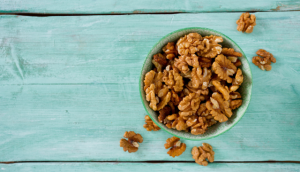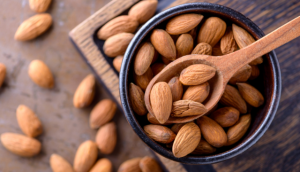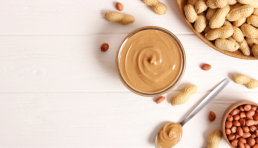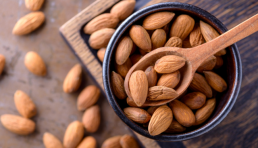Practice and Progress: Updates on Outbreaks, Advances in Research, and Processing Technologies for Low-moisture Food Safety.
Large, renowned outbreaks associated with low-moisture foods (LMFs) bring to light some of the potential, inherent risks that accompany foods with long shelf lives if pathogen contamination occurs. Subsequently, in 2013, Beuchat et al. (2013) noted the increased concern regarding these foods, specifically noting examples of persistence and resistance of pathogens in low-water activity foods (LWAFs), prevalence of pathogens in LWAF processing environments, and sources of and preventive measures for contamination of LWAFs. For the last decade, the body of knowledge related to LMF safety has exponentially expanded. This growing field and interest in LMF safety have led researchers to delve into survival and persistence studies, revealing that some foodborne pathogens can survive in LWAFs for months to years. Research has also uncovered many complications of working with foodborne pathogens in desiccated states, such as inoculation methods and molecular mechanisms that can impact pathogen survival and persistence. Moreover, outbreaks, recalls, and developments in LMF safety research have created a cascading feedback loop of pushing the field forward, which has also led to increased attention on how industry can improve LMF safety and raise safety standards. Scientists across academia, government agencies, and industry have partnered to develop and evaluate innovate thermal and nonthermal technologies to use on LMFs, which are described in the presented review. The objective of this review was to describe aspects of the extensive progress made by researchers and industry members in LMF safety, including lessons-learned about outbreaks and recalls, expansion of knowledge base about pathogens that contaminate LMFs, and mitigation strategies currently employed or in development to reduce food safety risks associated with LMFs. https://doi.org/10.1016/j.jfp.2022.11.010
Carcinogenic and non-carcinogenic risk assessment induced by pesticide residues in fresh pistachio in Iran based on Monte Carlo simulation.
This research is aimed at the analysis of 87 pesticides in 30 fresh pistachio samples prepared from stores in Iran by QuEChERS-ultra-high performance liquid chromatography-tandem mass spectrometry (UHPLC-MS/MS). The results showed at least one pesticide was in 67% of fresh pistachio samples. Kresoxim methyl residue was detected in 20 samples with average of 0.11 mg kg-1; this average is 2.2 times more than maximum residue limit (MRL). Buprofezin was recognized in five samples with average of 0.17 mg kg-1 was observed with 3.4 times more than MRL; hexaconazole and permethrin were recognized in three samples lower than MRL with an average residue of 0.030 and 0.028 mg kg-1, respectively. In addition, potential non-carcinogenic and carcinogenic health risk assessments were evaluated using probabilistic methods performed with the Monte Carlo simulation algorithm. The order of pesticide ranking based on hazard quotient (HQ) was hexaconazole > buprofezin > permethrin > kresoxim methyl. Total HQ (HI) was 2.0E-4 and for children, 9.0E-4. Hence, it means fresh pistachio consuming maybe not have significant short-term health risks for consumer. Ranking based on cancer risk (CR) was hexaconazole > kresoxim methyl > metalaxyl > permethrin > buprofezin. However, total CR due to pesticide residues was not higher than 1E-6 value (1.09E-9); therefore, consumers were not at significant risk of carcinogenicity in this product. https://doi.org/10.1007/s11356-023-25143-0
Efficient Remediation of Cadmium- and Lead-Contaminated Water by Using Fe-Modified Date Palm Waste Biochar-Based Adsorbents.
Heavy metals pollution of water resources is an emerging concern worldwide and seeks immediate attention. Date palm waste was transformed into biochar (BC), which was further modified through Fe-intercalation for the production of magnetic biochar (Fe-BC) in this study. The produced BC and Fe-BC were analyzed for chemical, proximate, surface, and elemental composition. The efficiency of the produced adsorbents to decontaminate the water from Cd2+ and Pb2+ ions was investigated through kinetics and an isotherm adsorption batch trial. Kinetics adsorption data fit well with the pseudo-second order and power function model, while equilibrium data were described well with the Langmuir and Freundlich isotherms. The maximum adsorption capacity as shown by the Langmuir model was the highest for Fe-BC for both Cd2+ (48.44 mg g-1) and Pb2+ (475.14 mg g-1), compared with that of BC (26.78 mg g-1 Cd2+ and 160.07 mg g-1 Pb2+). Both materials showed higher removal of Pb (36.34% and 99.90% on BC and Fe-BC, respectively) as compared with Cd (5.23% and 12.28% on BC and Fe-BC, respectively) from a binary solution. Overall, Fe-BC was more efficient in adsorbing both of the studied metals from contaminated water. The application of Fe-BC resulted in 89% higher adsorption of Cd2+ and 197% higher adsorption of Pb2+ from aqueous media as compared to BC. Kinetics and isotherm models as well as SEM-EDS analysis of the post-adsorption adsorbents suggested multiple adsorption mechanisms including chemisorption, pore-diffusion, and electrostatic interactions. https://doi.org/10.3390/ijerph20010802
The drivers and impacts of Amazon Forest degradation.
Approximately 2.5 × 106 square kilometers of the Amazon Forest are currently degraded by fire, edge effects, timber extraction, and/or extreme drought, representing 38% of all remaining forests in the region. Carbon emissions from this degradation total up to 0.2 petagrams of carbon per year (Pg C year−1), which is equivalent to, if not greater than, the emissions from Amazon deforestation (0.06 to 0.21 Pg C year−1). Amazon forest degradation can reduce dry-season evapotranspiration by up to 34% and cause as much biodiversity loss as deforestation in human-modified landscapes, generating uneven socioeconomic burdens, mainly to forest dwellers. Projections indicate that degradation will remain a dominant source of carbon emissions independent of deforestation rates. Policies to tackle degradation should be integrated with efforts to curb deforestation and complemented with innovative measures addressing the disturbances that degrade the Amazon Forest. https://doi.org/10.1126/science.abp8622
Human impacts outpace natural processes in the Amazon.
Amazonian environments are being degraded by modern industrial and agricultural activities at a pace far above anything previously known, imperiling its vast biodiversity reserves and globally important ecosystem services. The most substantial threats come from regional deforestation, because of export market demands, and global climate change. The Amazon is currently perched to transition rapidly from a largely forested to a nonforested landscape. These changes are happening much too rapidly for Amazonian species, peoples, and ecosystems to respond adaptively. Policies to prevent the worst outcomes are known and must be enacted immediately. We now need political will and leadership to act on this information. To fail the Amazon is to fail the biosphere, and we fail to act at our peril. https://doi.org/10.1126/science.abo5003
January 2023 News Brief
INC Strategic Goals to Aid in the Sustainable Growth of the Nut & Dried Fruit Sector, 2022-2026

In late 2022, the INC Executive Committee held its Strategic Planning Meeting to define a series of strategic goals aimed at bringing the industry together as a whole to increase consumption: 1) Increase global consumption to ensure a healthy balance between supply and demand; 2) Prioritize key areas of focus for health and nutrition to obtain regulatory approved health claims to aid the promotion of nuts and dried fruits globally; 3) Collaborate with international organizations regarding increasing market access and overcome the challenges of the trade barriers and supply chain issues; 4) Define the sustainability agenda for the nut and dried fruit industry. [Read more]
Enroll in the INC Academia and Get an Exclusive Discount on Your Congress Registration

If you're planning to attend the INC Congress in London, and have never studied in the INC Academia, why not enroll yourself or one of your employees on the Full Course of the Advanced Program on Nuts & Dried Fruits and save 50% on your Congress registration! The Advanced Program is tailored to the seasoned professional or prospective manager where, students will complete the 11 courses, written by top experts and learn the business side of the nut and dried fruit industry. Plus, this year the on-site part of the program will be taking place in London, just before the Congress, where students will visit processing plants, and distribution centers as well as participate in lectures and case studies from top professors. So, don't miss out on this exclusive offer for members, enroll today and enjoy the best educational program and the greatest event in the nut and dried fruit industry at discounted prices! [Enroll now!]
INC Innovation Awards Are Now Open!

Don't miss this opportunity to show the nut and dried fruit industry your dedication to innovation and share your brand’s new products at the XL World Nut and Dried Fruit Congress, in London! Delegates attending the World Nut and Dried Fruit Congress have the chance not only to share experiences but also to get enriched with new ideas. This contest will select the Top Best new product/service within the sector. [Apply now!]
INC Prepares for the INC Pavilion at Gulfood 2023

Gulfood 2023 is only a month away and from February 20-24, the INC will be hosting its INC Pavilion. With 18 companies joining, it is guaranteed to become the central meeting point for the nut and dried fruit industry. With an excellent high-visibility location at Za'Abeel Hall 5, co-exhibitors will have the chance to connect with potential business clients, network and discuss key topics within the sector. We can't wait to be there so, if you're attending the exhibition, please, come stop by and say hello!
Recent Study Shared by INC Finds Positive Effects of Walnut Consumption on Mental Health

A recent study published in the journal Nutrients examined the effects of academic stress and daily walnut consumption on mental health, biochemical markers of general health and gut microbiota in university students. Researchers conducted a randomized feeding trial in 80 healthy male and female undergraduate students at the University of South Australia between the ages of 18 and 35 years. For the duration of the 16-week study period, members of the treatment group were instructed to consume… [Read more]
INC Highlights New Study on Post-Exercise Benefits of Almond Intake

The journal Frontiers in Nutrition has published a new study analyzing how the ingestion of nutrient-rich almonds affects post-exercise inflammation and muscle soreness and damage. Researchers conducted a study with a randomized, parallel group design to determine whether daily consumption of almonds would mitigate post-exercise inflammation and muscle soreness and damage. A total of 64 non-obese adults, who did not regularly engage in resistance training, were instructed to consume either 57 grams of almonds or a calorie-matched snack bar each day for four weeks… [Read more]
INC Shares New Study on Oral Immunotherapy to Treat Peanut Allergy

A new study published in Clinical & Experimental Allergy assessed the safety and efficacy of oral immunotherapy using sequential doses of boiled peanuts followed by roasted peanuts to treat peanut allergy in children. Researchers conducted an open-label, phase II, single-arm clinical trial in children between the ages of 6 and 18 years with a history of peanut allergy. A total of 70 participants received oral immunotherapy with 12-hour boiled peanut for 12 weeks, 2-hour boiled peanut for 20 weeks… [Read more]
INC Updates on EU Sulfur Dioxide (SO2) Concerns for Dried Fruits.

As previously announced, on November 24, 2022, the European Food Safety Agency (EFSA) published its Scientific Opinion on the Follow-up of the re‐evaluation of sulfur dioxide (E 220), sodium sulfite (E 221), sodium bisulfite (E 222), sodium metabisulfite (E 223), potassium metabisulfite (E 224), calcium sulfite (E 226), calcium bisulfite (E 227) and potassium bisulfite (E 228). Sulfur dioxide-sulfites are added as preservatives and antioxidants to a range of food products, including dried fruits (dried apricots, raisins) and vegetables. [Read more]
INC Shares Latest Sustainability News

The INC’s latest sustainability update covers the outcomes of the UN COP15, new guidance from the International Sustainability Standards Board (ISSB) on climate-related disclosures and China’s goal of reducing pesticide use on fruits and vegetables by 10% by 2025. The update also discusses the European Commission’s new proposal for a regulation on packaging and packaging waste and Germany’s new national nutrition strategy. [Read more]
International Trade News Monitored by INC

See the most recent updates on international trade, including information on the World Trade Organization’s ruling against US tariffs imposed on steel and aluminum import and the United Kingdom’s decision to suspend the 8% import tariff on dried prunes from California. [Read more]
INC Compiles Food Safety News

In the latest INC food safety update, you can read about the European Union’s decision to temporarily increase official controls on the entry of certain nuts and dried fruits into the EU, as well as other food safety news from FAO, Brazil, Canada, Kenya, and the USA. [Read more]
Labeling News Shared by INC

In this month’s update on labeling news, you can read about the U.S. Food and Drug Administration’s decision to seek public and industry comments on two guidance documents about food allergen labeling requirements. The new draft guidance includes revised questions and answers to update and clarify information presented in earlier editions of the guidance, such as the labeling of tree nuts and images that show examples of labeling requirements. [Read more]
New Study on Oral Immunotherapy to Treat Peanut Allergy
A new study published in Clinical & Experimental Allergy assessed the safety and efficacy of oral immunotherapy using sequential doses of boiled peanuts followed by roasted peanuts to treat peanut allergy in children.
Researchers conducted an open-label, phase II, single-arm clinical trial in children between the ages of 6 and 18 years with a history of peanut allergy. A total of 70 participants received oral immunotherapy with 12-hour boiled peanut for 12 weeks, 2-hour boiled peanut for 20 weeks and roasted peanut for 20 weeks, followed by a target maintenance dose of 12 roasted peanuts per day for 6 to 8 weeks. The children then underwent a supervised oral food challenge involving the administration of approximately 3,000 mg of peanut protein.
Desensitization was successfully induced in 80% of the participants. Adverse events related to the treatment were uncommon (6.6 per 1,000 doses) and mostly mild. Withdrawal from the study due to adverse events was infrequent, occurring in only 3 participants. Similarly, only 3 participants reported using rescue epinephrine due to treatment-related adverse events. These findings suggest that this form of oral immunotherapy could be an effective method of inducing desensitization with a favorable safety profile.
Grzeskowiak, L. E., Tao, B., Aliakbari, K., Chegeni, N., Morris, S., & Chataway, T. (2023). Oral immunotherapy using boiled peanuts for treating peanut allergy: An open‐label, single‐arm trial. Clinical & Experimental Allergy.
New Study on Post-Exercise Benefits of Almond Intake
The journal Frontiers in Nutrition has published a new study analyzing how the ingestion of almonds affects post-exercise inflammation and muscle soreness and damage.
Researchers conducted a study with a randomized, parallel group design to determine whether daily consumption of almonds would mitigate post-exercise inflammation and muscle soreness and damage. A total of 64 non-obese adults, who did not regularly engage in resistance training, were instructed to consume either 57 grams of almonds or a calorie-matched snack bar each day for four weeks. After completing 90 minutes of eccentric exercise to induce muscle damage, participants were assessed for changes in plasma oxylipins, urinary gut-derived phenolics, plasma cytokines, muscle damage biomarkers, mood states and exercise performance.
Almond consumption was found to be associated with reduced post-exercise fatigue and tension, higher levels of leg/back strength and lower levels of serum creatine kinase. Participants who consumed almonds had significantly higher post-exercise plasma levels of 12,13-DiHOME and lower levels of 9,10-DiHOME, as well as higher urine levels of seven gut-derived phenolics. The findings suggest that almond intake has positive effects on improving mood state, retaining strength and decreasing muscle damage.
The Almond Board of California provided funding for this study.
Nieman, D. C., Omar, A. M., Kay, C. D., Kasote, D. M., Sakaguchi, C. A., Lkhagva, A., Weldemariam, M. M. & Zhang, Q. (2023) Almond intake alters the acute plasma dihydroxy-octadecenoic acid (DiHOME) response to eccentric exercise. Frontiers in Nutrition, 9.
Recent Study Finds Positive Effects of Walnut Consumption on Mental Health
A recent study published in the journal Nutrients examined the effects of academic stress and daily walnut consumption on mental health, biochemical markers of general health and gut microbiota in university students.
Researchers conducted a randomized feeding trial in 80 healthy male and female undergraduate students at the University of South Australia between the ages of 18 and 35 years. For the duration of the 16-week study period, members of the treatment group were instructed to consume one portion (approximately 56 grams) of fresh pre-portioned walnuts per day, whereas members of the control group were asked to refrain from consuming any type of nut or fatty fish. At follow-up clinical visits, participants provided blood, saliva and fecal samples and completed questionnaires to assess their mental health, mood, general well-being and sleep habits.
The findings showed that daily consumption of walnuts improved mental health indicators and protected against some of the negative effects of academic stress on metabolic and stress biomarkers. In particular, academic stress was associated with lower gut microbial diversity in female participants, which was improved by walnut consumption.
This study was co-funded by the University of South Australia and the California Walnut Board & Commission.
Herselman MF, Bailey S, Deo P, Zhou XF, Gunn KM, Bobrovskaya L. The Effects of Walnuts and Academic Stress on Mental Health, General Well-Being and the Gut Microbiota in a Sample of University Students: A Randomised Clinical Trial. Nutrients. 2022 Nov 11;14(22):4776
Allergenicity of peanut allergens and its dependence on the structure.
Food allergies are a global food safety problem. Peanut allergies are common due, in part, to their popular utilization in the food industry. Peanut allergy is typically an immunoglobulin E-mediated reaction, and peanuts contain 17 allergens belonging to different families in peanut. In this review, we first introduce the mechanisms and management of peanut allergy, followed by the basic structures of associated allergens. Subsequently, we summarize methods of epitope localization for peanut allergens. These methods can be instrumental in speeding up the discovery of allergenicity-dependent structures. Many attempts have been made to decrease the allergenicity of peanuts. The structures of hypoallergens, which are manufactured during processing, were analyzed to strengthen the desensitization process and allergen immunotherapy. The identification of conformational epitopes is the bottleneck in both peanut and food allergies. Further, the identification and modification of such epitopes will lead to improved strategies for managing and preventing peanut allergy. Combining traditional wet chemistry research with structure simulation studies will help in the epitopes' localization. https://doi.org/10.1111/1541-4337.13101



